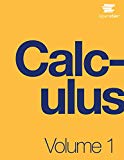
Concept explainers
Assuming that
Use the following guidelines to arrive at your recommendations:
➤ It is desirable to keep the target concentration levels in the brain as close as possible to constant levels between
➤ As a matter of convenience, a lower frequency of administration is better that a higher frequency of administration; once every
Want to see the full answer?
Check out a sample textbook solution
Chapter 3 Solutions
Differential Equations: An Introduction to Modern Methods and Applications
Additional Math Textbook Solutions
The Heart of Mathematics: An Invitation to Effective Thinking
Using and Understanding Mathematics: A Quantitative Reasoning Approach (6th Edition)
Mathematical Ideas (13th Edition) - Standalone book
A Problem Solving Approach to Mathematics for Elementary School Teachers (12th Edition)
Finite Mathematics for Business, Economics, Life Sciences and Social Sciences
Calculus for Business, Economics, Life Sciences, and Social Sciences (14th Edition)
- The sale of eggs that are contaminated with Salmonella can cause food poisoning among consumers. A large egg producer takes an SRS of 200 eggs from all the eggs shipped in one day. The laboratory reports that 11 of these eggs had Salmonella contamination. Unbeknownst to the producer, 0.2% of all eggs shipped had Salmonella. What is the best description of the values, 11 and 0.2%, in this situation? O 11 is a parameter and 0.2% is a statistic. O 0.2% is a parameter and 11 is a statistic. O Both 0.2% and 11 are parameters. Both 0.2% and 11 are statistics.arrow_forwardSuppose you fit the first-order model y = Po + B, x, + B2x2 + B3X3 + B,x4 + B5X5 + ɛ to n=28 data points and obtain SSE = 0.33 and R = 0.94. Complete parts a and b. a. Do the values of SSE and R suggest that the model provides a good fit to the data? Explain. A. Yes. Since R = 0.94 is close to 1, this indicates the model provides a good fit. Also, SSE = 0.33 is fairly small, which indicates the model provides a good fit. B. There is not enough information to decide. No. Since R = 0.94 is close to 1, this indicates the model does not provide a good fit. Also, SSE = 0.33 is fairly small, which indicates the model does not provide a good fit. b. Is the model of any use in predicting Test the null hypothesis Ho: B, = B2 = ... = B5 = 0 against the alternative hypothesis: At least of the %3D parameters B1, B2, B5 is nonzero. Use a = 0.05. The test statistic is (Round to two decimal places as needed.)arrow_forwardA short column has a diameter X₁ and is loaded with an axial compressive load X₂. The ultimate compressive stress of the column is X3. The variables have the following mean and s.d. values: X₁ X₂ X3 Mean 3.5 10.0 2.5 Determine the reliability index of the system. s.d. 0.4 1.0 0.5arrow_forward
- 5. Consider the following two simple regression models: Model I : Y, = B,+B,X, +H, Model II : Y,=a, +a, (X,- X)+v, (1) Derive the estimators for B, and a,. Are they the same? (2) Derive the estimators for B, and a, . Are they the same?arrow_forwardHeights (cm) and weights (kg) are measured for 100 randomly selected adult males, and range from heights of131 to194 cm and weights of 38 to150 kg. Let the predictor variable x be the first variable given. The 100 paired measurements yield x=167.70 cm, y=81.47 kg, r=0.189, P-value=0.060, and y=−102+1.07x. Find the best predicted value of y (weight) given an adult male who is 145 cm tall. Use a 0.05 significance level.arrow_forwardData on alcohol content and wine quality was collected from variants of a particular wine. From a sample of 46 wines, a model was created using the percentages of aloohol to predict wine quality Y-0.337 +0.5635X,, where X, in the alcohol content (%) and Y, is the rated quality of the wine. For these data, Syx 0.9316, X 10.63, and h 0.027260 when X 10. Complete parta (a) throi a. Construct a 05% confidence interval estimate of the mean wine quality rating for all wines that have 10% alcohol. 4.988 spypx= 10 s 5.608 (Type integers or decimals. Round to three decimal places as needed. Use ascending order) b. Construct a 95% prediction interval of the wine quality rating of an individual wine that has 10% alcohol. (Type integers or decimals. Round to three decimal places as needed. Use ascending order.)arrow_forward
- Heights (cm) and weights (kg) are measured for 100 randomly selected adult males, and range from heights of 135 to 188 cm and weights of 39 to 150 kg. Let the variable x be the height. The 100 paired measurements yield x=167.08 cm, y=81.32 kg, r=0.254, and y=−109+1.07x. Find the best predicted value of y (weight) given an adult male who is 163 cm tall. Use a 0.05 significance level. The best predicted value of y for an adult male who is 163 cm tall is kg. (Round to two decimal places as needed.)arrow_forwardThe data given below indicate the existence of a linear relationship between the x and y variables. Suppose an analyst who prepared the solutions and carried out the RI measurements was not skilled and as a result of poor technique, allowed intermediate errors to appear. The results are the following:Concentration of solution in percent (x) 10 26 33 50 61Refractive indices (y) 1.497 1.493 1.485 1.478 1.477Step 1. Carefully plot the given x and y values (from the table) on a regular graphing paper. Label then connect the points to observe a zigzag plot due to the scattered points. Step 2: Copy and fill the table given below: x (x - x̄) (x - x̄) 2 y (y - ȳ) (y - ȳ) 2 (x - x̄) (y - ȳ) 10 1.497 26 1.49333 1.48550 1.47861 1.477∑ = ∑ = ∑ = ∑ = ∑ = ∑ = ∑ =x̄= ∑xi ÷ Nx̄= ȳ = ∑yi ÷ Nȳ = Step 3. After completing the table, present following computations and the interpretation.a. Calculate the correlation coefficient (r), using the working formula: r =Σ (x − x ) (y − ȳ)√(Σ(x − x )2)(Σ(y −…arrow_forwardLet the two variables X and Y have the covariance and correlation coefficient between them as 2 and 0.5 respectively and V(X) = 2V(Y); then find the regression coefficient of X on Y.arrow_forward
- Heights (cm) and weights (kg) are measured for 100 randomly selected adult males, and range from heights of 130 to 190 cm and weights of 41 to 150 kg. Let the predictor variable x be the first variable given. The 100 paired measurements yield x = 167.53 cm, y 81.32 kg, r 0.259, P-value 0.009, and y = 106+ 1.09x. Find the best predicted value of y (weight) given an adult male who is 181 cm tall. Use a 0.10 significance lev. The best predicted value of y for an adult male who is 181 cm tall is kg. (Round to two decimal places as needed.)arrow_forwardThe effectiveness of a new bug repellent is tested on 17 subjects for a 10 hour period. (Assume normally distributed population.) Based on the number and location of the bug bites, the percentage of surface area exposed protected from bites was calculated for each of the subjects. The results were as follows: x = 92, 8 = 12 The new repellent is considered effective if it provides a percent repellency of at least 90. Using a = 0.01, construct a hypothesis test with null hypothesis 90 and alternative hypothesis μ > 90 to determine whether the mean repellency of the new bug repellent is greater than 90 by computing the following: = (a) the degree of freedom (b) the critical t value (c) the test statisticsarrow_forwardLecture(12.6): Resaerchers were interested in the effects of maternal stress on infants production of stress hormones. They measure the level of the hormone "cortisol", in infant saliva when the infants were 9 months old. The mothers were categorized according to the amount and type of stress they were experiencing during pregnancy . One group of mothers reported no extra ondinary stress during pregancy .Another group of mothers were living in New York city when the terrorist attack on the twin tower on september 11,2001. They were between 2 and 4 months on the day of the attack. The third group of mothers were refugee fleeing a war in their country. .They all lived in the refugee camp for the entire time that they were pregnant.They were re settleling in the US. (1) What type of test should the reseacher use to test this hypotheses? (2) What would the null and alternative hypotheses be? (Select two answers for each) (a) Z test (b)single sample t test (c)dependent…arrow_forward
 Discrete Mathematics and Its Applications ( 8th I...MathISBN:9781259676512Author:Kenneth H RosenPublisher:McGraw-Hill Education
Discrete Mathematics and Its Applications ( 8th I...MathISBN:9781259676512Author:Kenneth H RosenPublisher:McGraw-Hill Education Mathematics for Elementary Teachers with Activiti...MathISBN:9780134392790Author:Beckmann, SybillaPublisher:PEARSON
Mathematics for Elementary Teachers with Activiti...MathISBN:9780134392790Author:Beckmann, SybillaPublisher:PEARSON
 Thinking Mathematically (7th Edition)MathISBN:9780134683713Author:Robert F. BlitzerPublisher:PEARSON
Thinking Mathematically (7th Edition)MathISBN:9780134683713Author:Robert F. BlitzerPublisher:PEARSON Discrete Mathematics With ApplicationsMathISBN:9781337694193Author:EPP, Susanna S.Publisher:Cengage Learning,
Discrete Mathematics With ApplicationsMathISBN:9781337694193Author:EPP, Susanna S.Publisher:Cengage Learning, Pathways To Math Literacy (looseleaf)MathISBN:9781259985607Author:David Sobecki Professor, Brian A. MercerPublisher:McGraw-Hill Education
Pathways To Math Literacy (looseleaf)MathISBN:9781259985607Author:David Sobecki Professor, Brian A. MercerPublisher:McGraw-Hill Education





